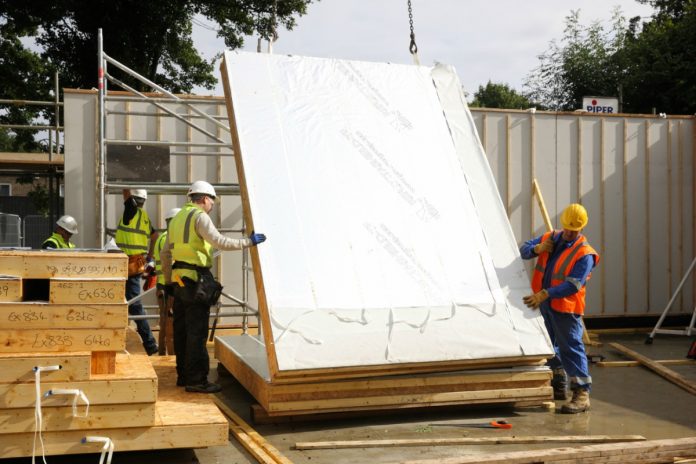Alex Goodfellow, Chairman of the Structural Timber Association, announces the launch of the first timber frame BIM library and why it’s time for SMEs to embrace digital working
Historically, the construction industry has been one of the least digitalised sectors, relying on traditional design and construction methods to deliver projects. However, in recent years this has started to change, with the industry accepting that to deliver projects in the most efficient way, it must embrace new technology and digital working.
One of the major changes in the construction industry is the introduction of Building Information Modelling (BIM), which is a collaborative, digitally enabled design and construction process that uses 3D modelling to deliver a project across multiple professions and trades – from concept to facilities management.
The 2016 NBS National BIM report shows that 86% of respondents expected to use BIM in projects this year. This highlights that different sectors across the industry have embraced BIM and are using it as an alternative to traditional design methods. However, the majority of BIM-ready companies are large players, with small to medium-sized companies being left behind.
In order to address this, we have worked with the CITB through its Flexible Funding – Innovation pilots to carry out a 12-month study assessing the BIM readiness of small and medium builders. As part of this project, we have designed and launched a Stewart Milne Timber Systems BIM library, the first timber frame BIM library in the UK.
This timber frame BIM library features 112 products, including walls, floors and roof products, and is free to download from BIM store. The use of the library will reduce lead-in time on a timber frame project by as much as a month by removing the need for a three-stage “back and forth” design process between architects and design teams. Instead, accurate 3D models can be prepared immediately after downloading content from the BIM library.
As part of the project, a survey of our housebuilding supply chain partners was carried out to assess BIM readiness. Only 2% of respondents were BIM ready, with just 32% actually aware of BIM. This has brought into sharp focus the work that needs to be done to ensure companies have access to the necessary BIM content to develop BIM 3D models they can use, to great benefit.
There has been a focus on the use of BIM in public contracts, with the UK government requiring adoption of BIM Level 2 on all its projects by last year.
In parallel with this, private sector companies are also moving to BIM-enabled platforms, as it just makes good business sense to do so. Work will continue but it highlights the opportunities that could be missed by companies who are not up-to-date with the latest technology and embracing digitisation.
3D BIM parametric digital working is the future technology and will ultimately replace 2D CAD line drawings. The timber frame BIM library has been configured as simple drop-down tabs, with “five click” search and select principle, supported with a simple user-guide on how to download and use the information.
Once the 3D building model is complete, this can be sent to design teams, who can automatically create a 3D IFC file of the timber frame structure and export it back into the BIM model. Thereafter, the 3D timber frame model can automatically create the timber frame manufacturing and on-site assembly drawings and material schedules. These can be fed direct to our automated production lines, using our existing CAD/CAM – human machine interface, production control system, which governs the automated manufacturing lines, ensuring a high-quality product is delivered efficiently and with little waste.
A feature of BIM is the ability to translate the 3D model into virtual reality, where clients can view the building before it is built, including the timber frame construction products used. In the future, the timber frame BIM library can be developed to 5D BIM format, including additional aspects such as cost, time and quality management.
It’s encouraging to see the recognition from the industry of the benefits offered by innovations like BIM and digital working. Getting the whole supply chain ready to take advantage of it, not just the bigger companies with the resources to invest, will be key to delivering the benefits to the most important part of the construction sector: the end user.
There is a wealth of information available to construction professionals on the Structural Timber Association website, from advice on structural timber systems to market reports and an online member’s enquiry system. For more information visit: www.structuraltimber.co.uk.
Alex Goodfellow
Chairman
Structural Timber Association
Tel: +44 (0)1259 272140
Twitter @STAtimber

















